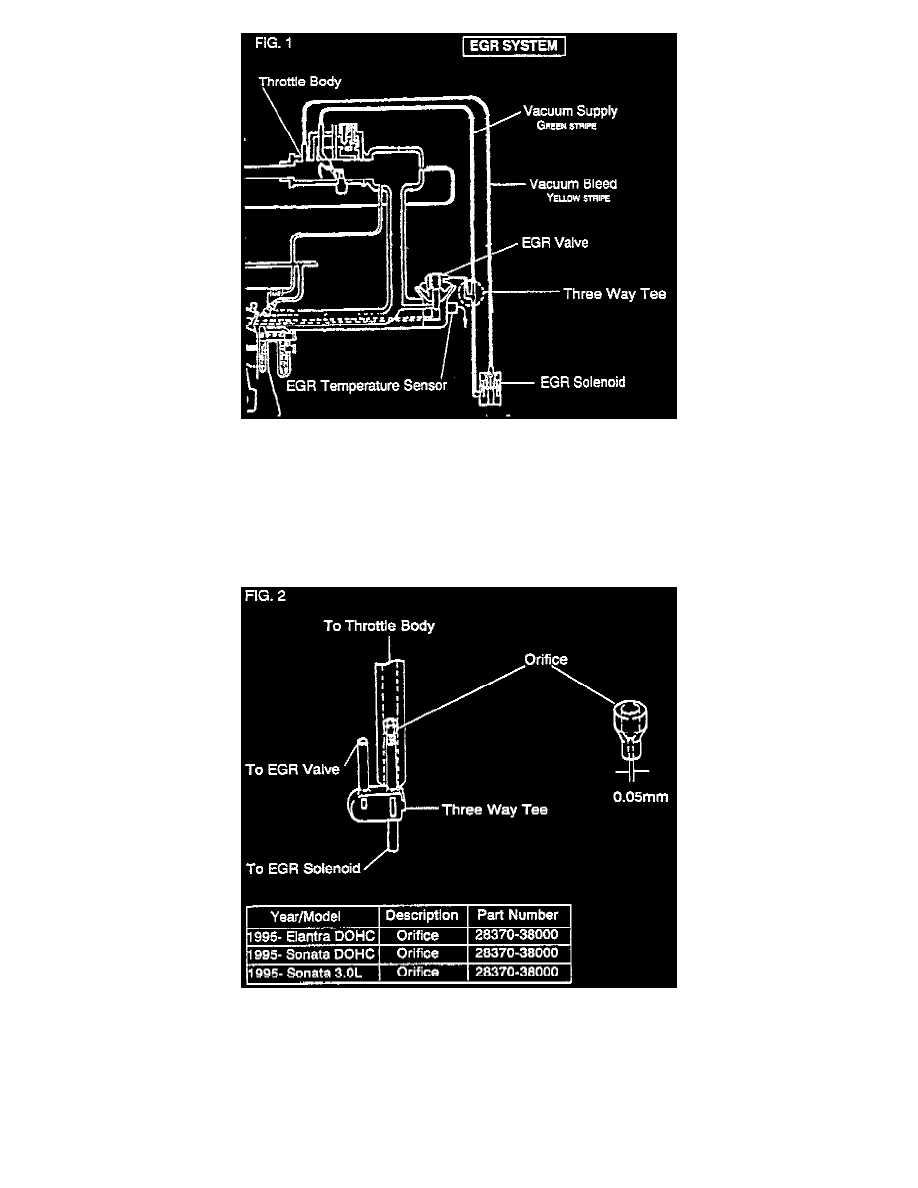Elantra L4-1595cc 1.6L DOHC (1993)

Figure 1
2.
Block off the vacuum bleed (SEE FIG. 1) to the EGR Solenoid by removing and plugging the vacuum hose (yellow stripe) at the throttle body port
marked "A". Raise engine RPM to 2500. Observe EGR temperature, if temperature exceeds 120° C, then the mechanical components of the
system are functioning properly; proceed to step 4. If the temperature did not exceed 120° C disconnect the vacuum supply line at the EGR Valve
and attach a manual vacuum pump. Raise the engine RPM to 2500 (the engine will stall if the EGR is opened at idle) and apply vacuum. Observe
EGR temperature, if it exceeds 120° C proceed to step 3. Otherwise, remove the EGR and check for blockage in the passageway. A complete
inspection of the passageway could require removal of the intake manifold.
Figure 2
3.
If the EGR Temperature Sensor and Valve have tested okay up to this point, then the vacuum supply could be restricted. The restriction can be in
the throttle body or in the vacuum hose leading to the EGR Valve. There are two styles of throttle bodies; the old style (before Production Date:
12/13/94) has the vacuum orifice in the throttle body, the new style (beginning at Production Date: 12/13/94) has the orifice in the vacuum hose
(green stripe) going to the EGR Valve (SEE FIG. 2).
WEAR SAFETY GOGGLES WHEN PERFORMING THE FOLLOWING PROCEDURE:
